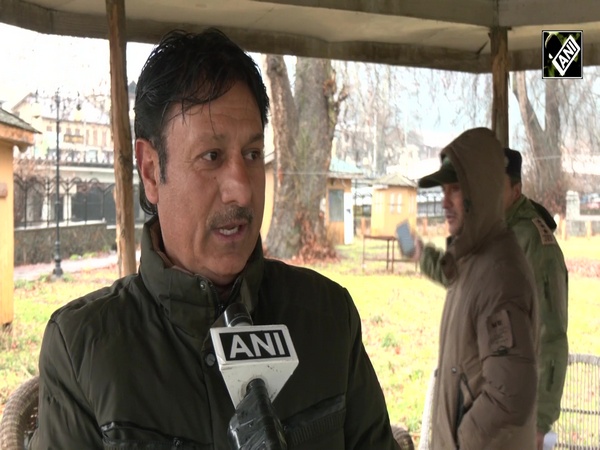Cruise industry restart: How Singapore residents are vacationing 'overseas'
Jul 19, 2021

By Lee Kah Whye
Singapore, July 19 : Before the COVID-19 pandemic, Singapore with its strategic location, excellent air connectivity and world-class air and sea ports, was seeing explosive growth in its cruise industry propelled by rising number of cruise passengers particularly from China and India.
Today, although foreign tourists have all but vanished, the cruise industry is getting a second wind from enthusiastic locals eager to take a vacation away from the tiny island they call home.
Singapore is located strategically in Southeast Asia, within easy reach of 25,000 beautiful islands including Bali, Langkawi, and Phuket, and 37 UNESCO World Heritage sites. If it's Southeast Asian hinterland is the "Caribbean of the East", Singapore is the Miami.
Luxury cruise liners from the world's top cruise operators like Carnival, Royal Caribbean, and Genting operated regional cruises from Singapore with some of their latest and fanciest boats.
To supplement the already existing Singapore Cruise Centre at Harbour Front near the tourist island of Sentosa, Singapore invested in a USD 380 million modern state-of-the-art cruise centre near the city centre. The Marina Bay Cruise Centre received its first vessel, Voyager of the Seas from Royal Caribbean International on May 22, 2012.
Between 2010 and 2019, Singapore's cruise industry passenger through put grew nearly 80 per cent. Data from the Singapore Tourism Board (STB) revealed that direct revenue from the industry contributed USD 530 million to Singapore's economy in 2016, 36 per cent higher compared with 2010. This number excludes indirect spending by establishments on land that cater to cruise tourists.
Indian visitors are a significant contributor to this exceptional growth in cruise passengers. An STB report stated that there was a 27 per cent spike in Indian visitors coming to Singapore for cruises in 2017. Indians make up the third largest group of visitors to Singapore after China and Indonesia with 1.4 million arrivals in 2019. They spent over USD 1.2 billion that year.
Royal Caribbean's Managing Director Sean Treacy said in 2018 to The Straits Times that the regional cruise market was growing at around 20 per cent annually on average. According to STB Director of Cruise, Annie Chang, the number of cruise passengers sailing in Southeast Asia was expected to grow at 4.6 per cent to 6.4 per cent per year to reach an estimated 4.5 million passengers by 2035. Both Royal Caribbean and Genting Cruise Lines were looking into expanding their fleets and ship itineraries in the region.
However, the COVID-19 pandemic put paid to these projections and plans.
In February 2020, the now infamous Diamond Princess, owned by Carnival Corporation, was quarantined off the Port of Yokohama, Japan, due to a COVID-19 outbreak. This resulted in cruise ships being called "floating petri dishes" for their potential to incubate and propagate the virus. It was the first of many incidences involving cruise ships which resulted in people having an aversion to vacationing on a boat.
Out of a total of 3,711 passengers and crew on the Diamond Princess - about 138 were from India - 19 per cent or 712 were ultimately confirmed to have contracted the virus. According to Japan's Ministry of Health, Labour, and Welfare, by April, there were 14 COVID-19 related deaths. The unfortunate people on board were finally allowed to disembark after spending 27 days anchored off Tokyo Bay having unwittingly participated in one of the earliest experiments on how to (or not to) deal with COVID-19.
Last November, Singapore's tourism body, the STB, in an effort to revive the tourism industry, worked with Royal Caribbean and Genting to restart cruising for Singapore residents in a pilot scheme that allows cruise ships to operate at 50 per cent capacity with stringent COVID safety measures including pre-departure COVID tests.
For people living in Singapore, this was a panacea for their travel bug. Ever since the pandemic started, leisure travel abroad was not allowed. People living here were limited to "staycations" at local hotels and visiting local tourist attractions.
By April of this year, STB reported that Singapore which had clocked 120,000 passengers accounted for a third of the world's cruises without major problems. With very much the rest of the world still under pandemic restrictions and people still reticent to sail on luxury liners due to the early outbreaks, STB heralded the success of the pilot "cruise to nowhere" scheme where ships depart from Singapore and return to Singapore without berthing anywhere else.
As of today, almost 220,000 people have sailed with either Royal Caribbean's Quantum of the Seas or Genting's World Dream on over 100 cruises since the resumption of cruising in Singapore.
While popular, these cruises have not been without incident.
In early December, an 83-year-old passenger recorded a positive test which caused the Quantum of the Seas to turn back to Singapore on the third day of a four-day cruise. Re-tests on and discovered this to be a false alarm.
Last week, Genting's World Dream returned to port a few hours earlier than scheduled on Wednesday, July 14, while on a four-day cruise after a 40-year-old man tested positive onboard. This time it was It turned out to be real. The man was part of a blossoming COVID-19 cluster that was developing on land after he departed.
On July 12, Monday, the Singapore authorities reported the first three cases of a new KTV (Karaoke Television) cluster. By Saturday, this cluster had grown to 148 cases, and many believe this is just the tip of the iceberg as many KTV cases are expected to be unreported. The total number of COVID-19 cases jumped from near zero in the previous week to average about 52 daily community cases in the last 4 days from Wednesday to Saturday. This caused the government to reverse its re-opening plans for the city.
For those unfamiliar with the night scene in Singapore, these KTV lounges employ hostesses of various nationalities who provide services beyond serving patrons food and drinks and singing with them. While under COVID curbs, they were supposed to have pivoted to food and beverage outlets, but many were offering "other services" contravening COVID regulations. That COVID spread so rapidly and so easily in such small spaces and in such an intimate setting is, therefore, no surprise.
Co-chair of COVID-19 multi ministry task force and Trade and Industry Minister, Gan Kim Yong said on July 16 that the KTV cluster was a "major setback" in Singapore's journey to recovery.



















